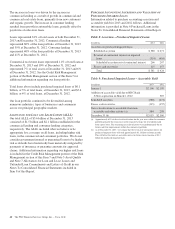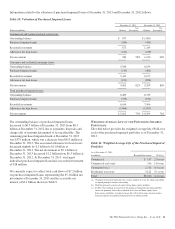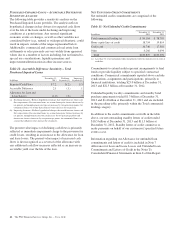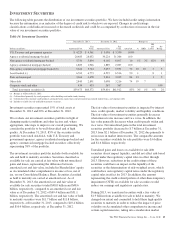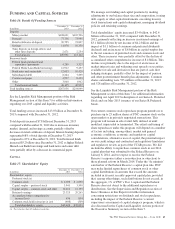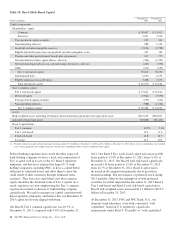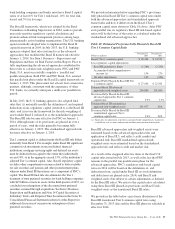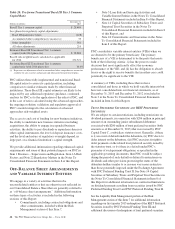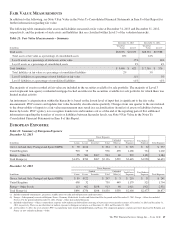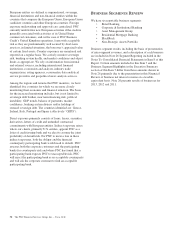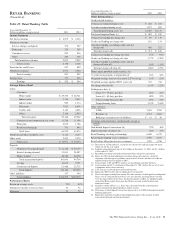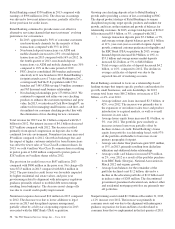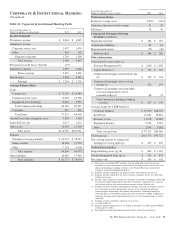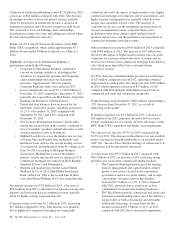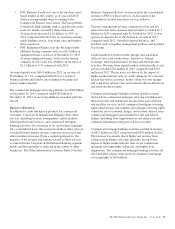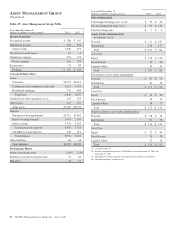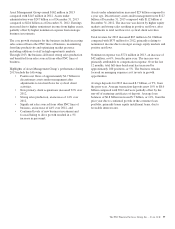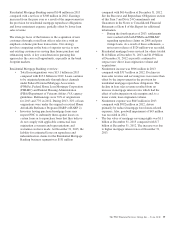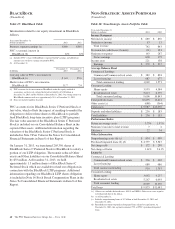PNC Bank 2013 Annual Report Download - page 68
Download and view the complete annual report
Please find page 68 of the 2013 PNC Bank annual report below. You can navigate through the pages in the report by either clicking on the pages listed below, or by using the keyword search tool below to find specific information within the annual report.European entities are defined as supranational, sovereign,
financial institutions and non-financial entities within the
countries that comprise the European Union, European Union
candidate countries and other European countries. Foreign
exposure underwriting and approvals are centralized. PNC
currently underwrites new European activities if the credit is
generally associated with activities of its United States
commercial customers, and, in the case of PNC Business
Credit’s United Kingdom operations, loans with acceptable
risk as they are predominantly well secured by short-term
assets or, in limited situations, the borrower’s appraised value
of certain fixed assets. Country exposures are monitored and
reported on a regular basis. We actively monitor sovereign
risk, banking system health, and market conditions and adjust
limits as appropriate. We rely on information from internal
and external sources, including international financial
institutions, economists and analysts, industry trade
organizations, rating agencies, econometric data analytical
service providers and geopolitical news analysis services.
Among the regions and nations that PNC monitors, we have
identified five countries for which we are more closely
monitoring their economic and financial situation. The basis
for the increased monitoring includes, but is not limited to,
sovereign debt burden, near term financing risk, political
instability, GDP trends, balance of payments, market
confidence, banking system distress and/or holdings of
stressed sovereign debt. The countries identified are: Greece,
Ireland, Italy, Portugal and Spain (collectively “GIIPS”).
Direct exposure primarily consists of loans, leases, securities,
derivatives, letters of credit and unfunded contractual
commitments with European entities. Indirect exposure arises
where our clients, primarily U.S. entities, appoint PNC as a
letter of credit issuing bank and we elect to assume the joint
probability of default risk. For PNC to incur a loss in these
indirect exposures, both the obligor and the financial
counterparty participating bank would need to default. PNC
assesses both the corporate customers and the participating
banks for counterparty risk and where PNC has found that a
participating bank exposes PNC to unacceptable risk, PNC
will reject the participating bank as an acceptable counterparty
and will ask the corporate customer to find an acceptable
participating bank.
B
USINESS
S
EGMENTS
R
EVIEW
We have six reportable business segments:
• Retail Banking
• Corporate & Institutional Banking
• Asset Management Group
• Residential Mortgage Banking
• BlackRock
• Non-Strategic Assets Portfolio
Business segment results, including the basis of presentation
of inter-segment revenues, and a description of each business
are included in Note 26 Segment Reporting included in the
Notes To Consolidated Financial Statements in Item 8 of this
Report. Certain amounts included in this Item 7 and the
Business Segment Highlights in the Executive Summary
section of this Item 7 differ from those amounts shown in
Note 26 primarily due to the presentation in this Financial
Review of business net interest revenue on a taxable-
equivalent basis. Note 26 presents results of businesses for
2013, 2012 and 2011.
50 The PNC Financial Services Group, Inc. – Form 10-K


